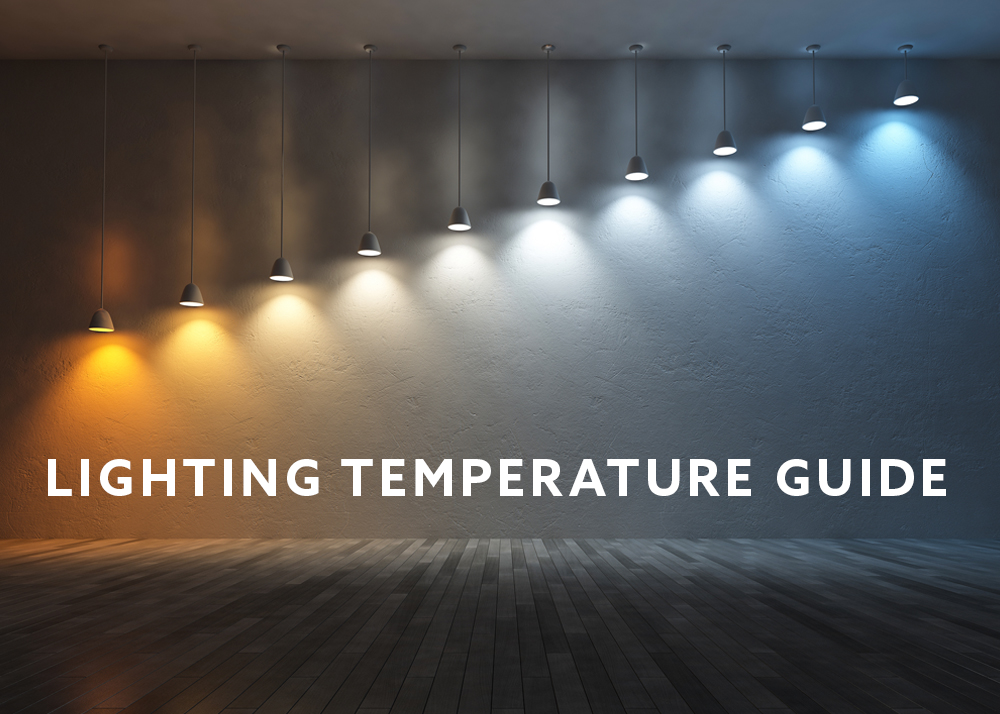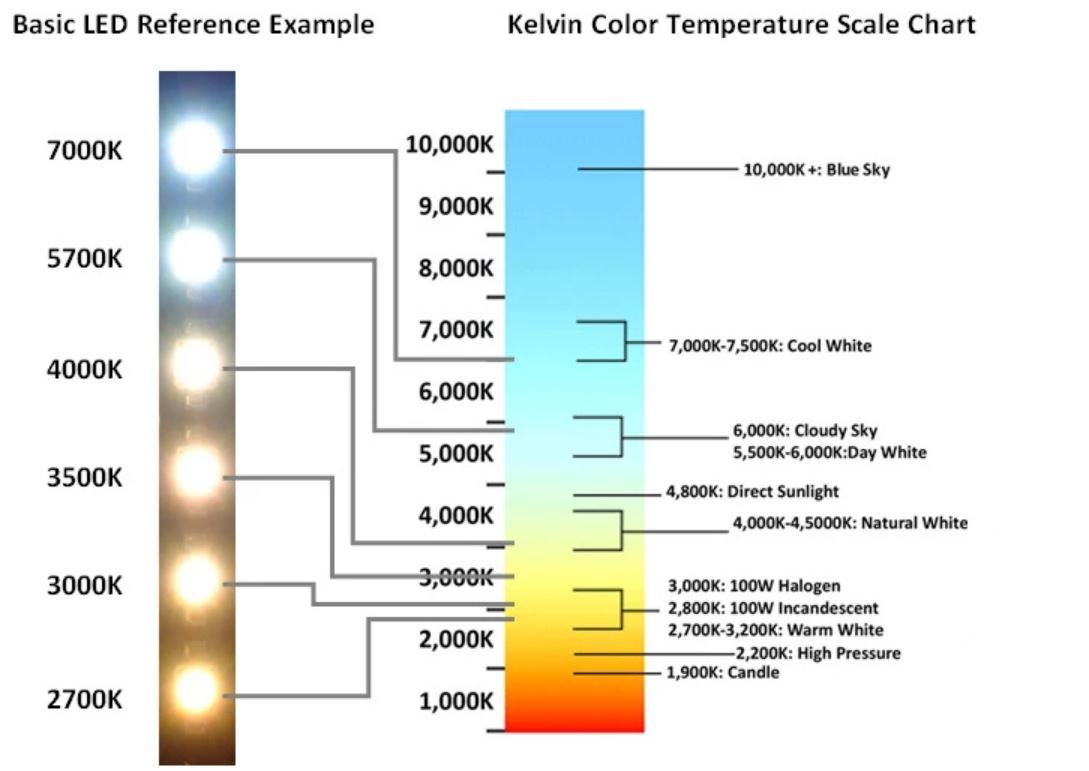Understanding Color Temperature

Color temperature is a crucial aspect of under cabinet lighting, influencing the overall ambiance and mood of your kitchen. It’s measured in Kelvin (K) and refers to the perceived color of the light emitted by a light source.
Color Temperature and Ambiance
The color temperature of a light source significantly impacts the overall ambiance and mood of a space. Warm white lights, with lower Kelvin ratings, create a cozy and inviting atmosphere, reminiscent of candlelight. On the other hand, cool white lights, with higher Kelvin ratings, produce a brighter and more stimulating environment, often associated with daylight.
Color Temperature Spectrum
Here’s a breakdown of the different color temperatures and their typical applications:
- Warm White (2700K – 3200K): These lights create a warm and inviting atmosphere, often used in living rooms, bedrooms, and dining areas. They are reminiscent of incandescent bulbs and create a cozy and relaxing ambiance.
- Neutral White (3500K – 4500K): These lights offer a balanced and natural light, making them suitable for kitchens, bathrooms, and offices. They provide a bright and clear light that’s ideal for task lighting.
- Cool White (5000K – 6500K): These lights emit a crisp and bright white light, similar to daylight. They are commonly used in commercial settings, workshops, and garages, where bright and clear illumination is essential.
- Daylight (6500K – 7500K): These lights provide the closest approximation to natural daylight, offering a bright and clear illumination. They are often used in studios, offices, and retail spaces where accurate color representation is crucial.
Choosing the Right Color Temperature for Under Cabinet Lighting: Under Cabinet Lighting Color Temperature

Choosing the right color temperature for under cabinet lighting can significantly impact the overall look and feel of your kitchen, influencing everything from how food appears to the ambiance of the space. Understanding the different color temperatures and their effects is crucial for creating a functional and aesthetically pleasing kitchen.
Factors to Consider, Under cabinet lighting color temperature
When selecting the color temperature for your under cabinet lighting, consider the following factors:
- Type of Kitchen: The style of your kitchen plays a significant role in determining the appropriate color temperature. For example, a modern kitchen with sleek surfaces and minimalist design might benefit from cooler, more contemporary lighting, while a traditional kitchen with warm tones and rustic elements might be better suited to warmer, more inviting lighting.
- Desired Ambiance: The ambiance you want to create in your kitchen also influences the color temperature choice. Warmer lighting creates a cozy and inviting atmosphere, while cooler lighting can make the space feel more modern and energetic.
- Task Requirements: Consider the tasks you will perform under the cabinet lighting. For example, prepping food requires bright, clear lighting, while dining might benefit from a softer, more ambient light.
Impact of Color Temperature on Food and Surfaces
The color temperature of your under cabinet lighting can significantly affect the appearance of food and surfaces in your kitchen.
- Warm Color Temperatures: Warm color temperatures (2700K-3000K) tend to make food appear more appealing, especially red meats and vegetables, as they enhance the vibrancy of these colors. These warmer tones also create a cozy and inviting atmosphere in the kitchen.
- Cool Color Temperatures: Cool color temperatures (4000K-6000K) tend to make food appear less appealing, especially red meats and vegetables, as they can make these colors appear duller. However, cool color temperatures can make countertops and appliances appear cleaner and more modern.
Color Temperature Suitability for Kitchen Tasks
Here’s a table comparing various color temperatures and their suitability for specific kitchen tasks:
| Color Temperature (K) | Description | Application | Example |
|---|---|---|---|
| 2700K-3000K | Warm White | Dining, creating a cozy ambiance | Dining area with warm, inviting lighting |
| 3000K-3500K | Soft White | General kitchen lighting, prepping food | Kitchen with bright, functional lighting for prepping |
| 4000K-4500K | Cool White | Task lighting, highlighting details | Under cabinet lighting for detailed food preparation |
| 5000K-6500K | Daylight | Creating a bright and modern look | Modern kitchen with bright, contemporary lighting |
Benefits and Drawbacks of Different Color Temperatures

Understanding the color temperature of your under cabinet lighting is essential, as it significantly influences the overall ambiance and functionality of your kitchen. Choosing the right color temperature can enhance the look of your countertops, highlight food preparation areas, and create a welcoming atmosphere. However, the wrong color temperature can make your kitchen feel cold, sterile, or even distort the appearance of your food.
Impact of Warm White, Cool White, and Daylight Color Temperatures on Kitchen Countertop
The impact of different color temperatures on a kitchen countertop can be visualized as follows:
Warm White (2700-3200K): This color temperature casts a warm, inviting glow, reminiscent of incandescent light bulbs. It creates a cozy and relaxing atmosphere, making it ideal for casual dining or evening gatherings. The warm tones can make food appear more appetizing, especially for dishes with rich colors like red meats or baked goods. However, warm white light can also make surfaces appear slightly yellowed or less vibrant.
Cool White (4000-4500K): Cool white lighting offers a brighter and more modern feel, resembling the light from fluorescent bulbs. This color temperature is often preferred for tasks that require precision, such as food preparation or cleaning, as it provides excellent visibility and enhances contrast. However, cool white light can make some surfaces appear too bright or even sterile, and it might not be as flattering for certain food items, particularly those with delicate colors.
Daylight (5000-6500K): Daylight color temperature closely mimics natural sunlight, offering the most accurate color rendition. It provides a crisp, clear, and invigorating atmosphere, ideal for kitchens that receive ample natural light. This color temperature is excellent for showcasing the true colors of food, making it perfect for kitchens used for professional cooking or food photography. However, daylight lighting can be harsh and may make some surfaces appear too bright or even cold.
Visual Representation:
Imagine a kitchen countertop with a bowl of fresh fruit, a cutting board with vegetables, and a glass of water.
* Warm White: The warm white light casts a soft, golden glow on the countertop, highlighting the rich colors of the fruit and vegetables. The water appears slightly yellowed, and the shadows are soft and diffused, creating a cozy ambiance.
* Cool White: The cool white light provides a brighter, more clinical illumination, making the countertop appear clean and sterile. The fruit and vegetables appear vibrant and sharp, but the water appears slightly blue. The shadows are sharper and more defined, creating a sense of clarity and precision.
* Daylight: The daylight light mimics natural sunlight, showcasing the true colors of the fruit, vegetables, and water. The shadows are natural and balanced, providing an accurate representation of the countertop’s details.
Benefits and Drawbacks of Warm White, Cool White, and Daylight Color Temperatures
The choice of color temperature depends on your personal preferences and the intended use of the kitchen.
Warm White
- Benefits: Creates a cozy and inviting atmosphere, enhances the appearance of food, ideal for casual dining and evening gatherings.
- Drawbacks: Can make surfaces appear slightly yellowed, may not be ideal for tasks requiring precise color accuracy.
Cool White
- Benefits: Provides excellent visibility and contrast, ideal for food preparation and cleaning tasks, offers a modern and clean aesthetic.
- Drawbacks: Can make surfaces appear too bright or sterile, may not be flattering for all food items, can create a cold or harsh ambiance.
Daylight
- Benefits: Offers the most accurate color rendition, mimics natural sunlight, ideal for professional cooking and food photography.
- Drawbacks: Can be harsh and may make surfaces appear too bright or cold, not suitable for creating a cozy or intimate atmosphere.
Under cabinet lighting color temperature – The warmth of a soft white light or the crispness of a cool blue, under cabinet lighting can transform your kitchen into a space that reflects your mood. To control this mood, consider installing a led cabinet light door switch , which seamlessly turns your lights on and off as you open and close your cabinets.
With this simple addition, you can enjoy the perfect lighting ambiance for every culinary adventure.
The warmth of a kitchen is often amplified by the right under cabinet lighting. A warm white hue can create a welcoming ambiance, while a cooler white might enhance the vibrancy of your countertops. And for those special pieces, like a blue hills lighted china cabinet , a soft, warm light can beautifully showcase their intricate details.
No matter the style, the right under cabinet lighting can illuminate your kitchen in a way that reflects your personal taste and creates a space you truly love.